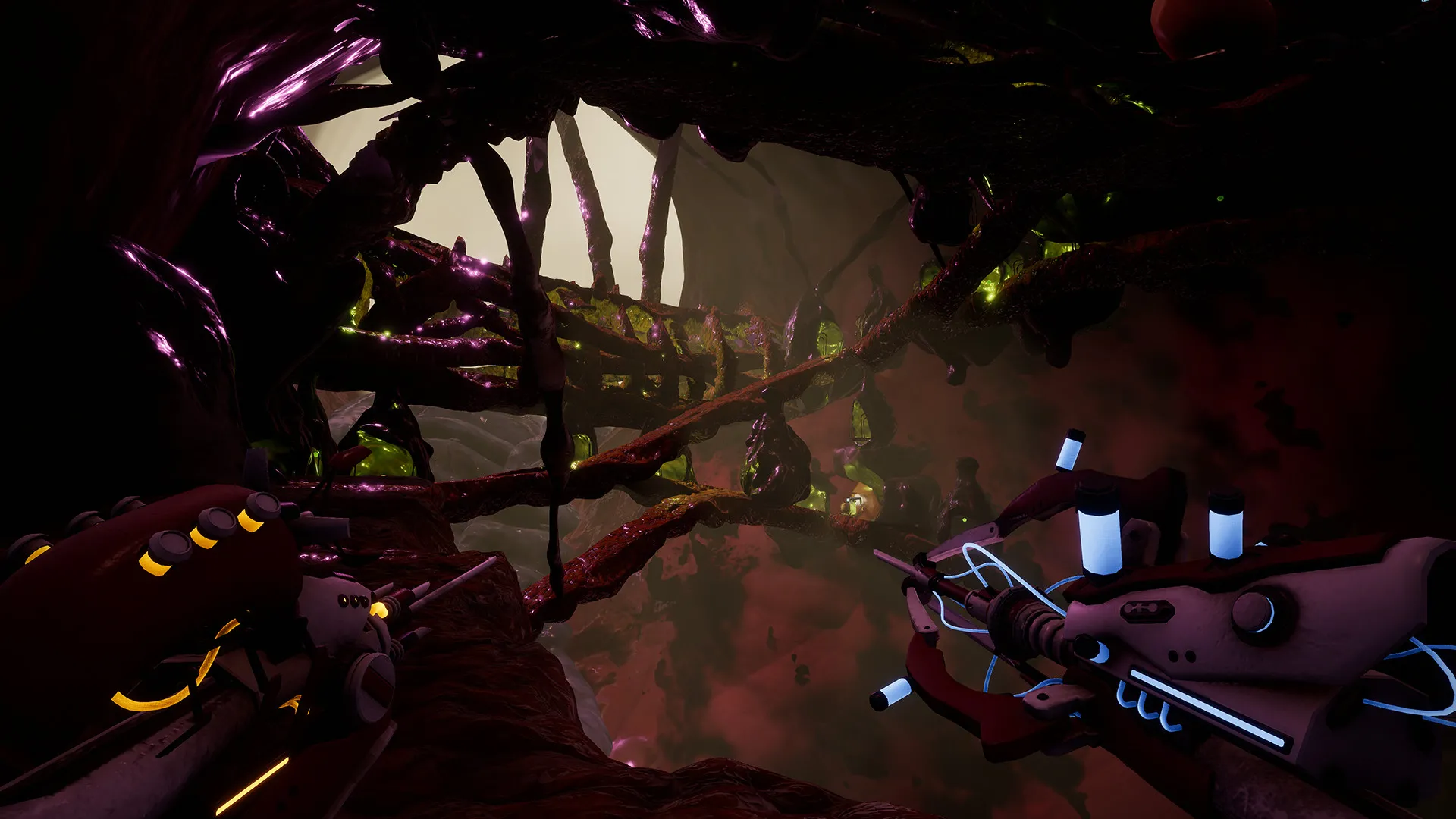
Project Remedium: A Microscopic Adventure with Macroscopic Flaws
Contents
Nanotechnology holds immense potential across various scientific fields, including medicine. Researchers are exploring the use of gold nanoparticles to combat cancer, showcasing nanotechnology’s promise as a powerful tool for healing. Atomic Jelly, a Polish game development studio, taps into this fascinating concept with their debut title, Project Remedium. This game puts players in the pilot seat of a nanoscopic robot tasked with eradicating a deadly illness within a 9-year-old child’s body. Does this unique premise translate into a compelling gaming experience? Let’s delve into the microscopic world of Project Remedium and uncover its strengths and weaknesses.
Navigating the Human Body: A Repetitive Journey
Project Remedium presents itself as a shooter, placing players in control of a tiny robot navigating the intricate landscapes of the human body, from intestines and liver to blood vessels. While the setting is intriguing, the gameplay falls short of expectations. The core mechanics feel simplistic and repetitive. Players are equipped with two weapons – an energy weapon and a syringe – mapped to the left and right mouse buttons, respectively. Both function similarly, firing single shots with each click, regardless of how long the button is held down. This limited firing mechanism becomes increasingly frustrating as swarms of bacteria overwhelm the player, leading to a tedious and unsatisfying combat experience.
Upgrades for these weapons are available using resources gathered throughout the game. However, investing in movement upgrades, such as grappling and speed boosts, proves far more beneficial than enhancing the underwhelming weaponry. The game’s balance leans heavily towards evasion rather than confrontation, making direct combat a chore. Facing the relentless bacterial hordes feels akin to fighting with water pistols against heavily armored opponents.
The enemy design also contributes to the game’s shortcomings. The bacteria, while varied in shape, lack visual distinction and often resemble harmless blobs. Their behavior is equally unimpressive, moving predictably and posing little strategic challenge. Furthermore, their ability to spot the player from afar, coupled with the player’s limited offensive capabilities, creates a constant sense of vulnerability and frustration. Escaping to higher ground using the grappling hook often becomes the preferred tactic, highlighting the game’s imbalance.
 Project Remedium – Đánh Giá Game
Project Remedium – Đánh Giá Game
A Lackluster Presentation
Powered by Unreal Engine 4, Project Remedium initially impresses with visually appealing sequences, particularly during journeys through the bloodstream. However, this initial promise fades quickly due to inconsistent visual quality and a lack of polish.
The level design, while conceptually interesting, suffers from restrictive gameplay. Players are often funneled through predetermined paths, with little freedom to explore. Deviating from the designated route frequently leads to frustrating situations, such as getting stuck in crevices or inadvertently triggering environmental hazards. Invisible walls further restrict exploration, creating an artificial and limiting experience. The lack of a “restart from last checkpoint” option exacerbates these issues, forcing players to restart the entire level when encountering such obstacles.
The environments themselves, while representing internal organs, lack visual diversity. Repetitive textures and a predominantly red color palette create a monotonous aesthetic. The inclusion of incongruous elements, such as machinery, streetlights, and wooden bridges, further detracts from the immersion and creates a jarring visual experience.
 Project Remedium – Đánh Giá Game
Project Remedium – Đánh Giá Game
The audio design fares no better. Aside from the voice acting, the sound effects and music are underwhelming and lack impact. The weapons emit weak, unsatisfying sounds, and environmental audio cues are often missing entirely. This lack of auditory feedback further diminishes the gameplay experience.
 Project Remedium – Đánh Giá Game
Project Remedium – Đánh Giá Game
Glimmers of Hope in a Microscopic World
Despite its numerous flaws, Project Remedium offers a surprisingly touching narrative. The game effectively portrays the struggles of a child battling illness, conveying a sense of vulnerability and resilience. Encounters with larger bacteria, accompanied by chilling cries, create moments of genuine unease and highlight the severity of the child’s condition.
The game’s environments, while visually repetitive, occasionally offer glimpses of beauty and wonder. Familiar anatomical structures are presented in a unique and thought-provoking way, reminding players of the intricate complexity of the human body.
 Project Remedium – Đánh Giá Game
Project Remedium – Đánh Giá Game
Project Remedium also has educational value. It provides a simplified yet engaging representation of nanotechnology’s potential in medicine. Players gain a basic understanding of how these microscopic robots could be used to fight disease, sparking curiosity and promoting further exploration of the topic.
 Project Remedium – Đánh Giá Game
Project Remedium – Đánh Giá Game
Conclusion: A Missed Opportunity
While Project Remedium presents a novel concept and a heartwarming narrative, its execution falls short. The repetitive gameplay, underwhelming visuals and audio, and restrictive level design significantly detract from the overall experience. Despite glimmers of potential, Project Remedium ultimately feels like a missed opportunity to create a truly compelling and engaging journey through the human body. The game’s performance issues, with frequent frame rate drops even on lower settings, further compound its problems. While the game may appeal to those seeking a unique narrative experience, its gameplay shortcomings will likely leave many players feeling frustrated and unfulfilled.





Comments (0)